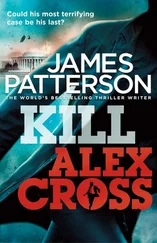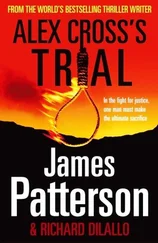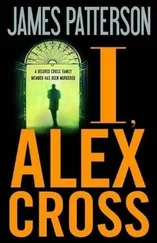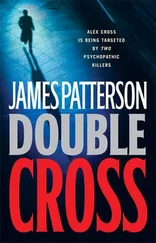I called back Calvin and got the reverend’s number.
Solstice answered on the first ring.
“Hello, Reverend. This is Detective Michael Bennett of the NYPD. I’m investigating the cathedral hijacking. I hear you have an insight into the case. I’d like to hear it.”
“Ha!” Solstice said forcefully. “Insight my butt. I know what you’re doing. What you’re trying to pull. It’s starting already.”
“What is it you think I’m starting exactly, Reverend?”
“What you punks are best at. The coverup. Sweeping the truth under the rug. Listen, man, I know . I been inside. I know cops. Only pros like you could handle us the way you did. Oh, yeah, and then everybody just conveniently gets away. Just missed ’em, I bet. You cops pulled this off, and now you’re covering it up. Same as it’s always been.”
Could that be true? I sure doubted it.
But Solstice had raised two serious questions: How did the hijackers know so much about siege tactics? And how did they always seem to know what we were going to try next?
THERE ARE ACTUALLY ten prisons on Rikers Island in the Bronx, housing as many as seventeen thousand inmates. Rikers is almost a small town, with its schools, clinics, athletic fields, chapels and mosques, grocers, barbershops, a bus depot, even a car wash.
As I arrived there early the next morning, I was hopeful again. I’d had an idea during the night, and now I had the opportunity to execute it.
At a little past eight, I walked by the Amnesty Box, where prison visitors are allowed to deposit drugs or weapons without fear. I had neither, so I proceeded inside and was escorted to a small meeting room inside Rikers’ Central Punitive Segregation Unit, also known as “the Bing.”
About a quarter of the inmates at Rikers are poor people who can’t afford to post bails of five hundred dollars or less, but I was more interested in the hard cases. For the next four hours, I sat in the room and met dozens of inmates.
I played them a tape of excerpts with Jack’s voice from the negotiations. Maybe somebody would recognize “Jack” from a previous stay at Rikers or one of the other prison facilities around New York.
But not Angelo, a burglar with an exaggerated shoulder curl, like a boxer always ready to fight.
Not Hector, a gang player with two tear tattoos at the corner of his right eye, signifying he’d killed two people so far in his twenty-one years.
Not J.T. either-a white thug from Westchester with a serious drug habit who was a walking Merck Manual on pills and meds.
Or Jesse from 131st Street in Harlem, placid face with one lazy eye, soul patch under his lip, inside Rikers for alleged felonious assault.
In fact, not any of the seventy-nine inmates who came to see me in the cramped meeting room space had anything for me. How depressing was that?
Until my eightieth visitor, Tremaine, a skinny “older” guy, maybe forty, though he looked fifty, at least that. He said he thought maybe he’d heard that voice before-Jack’s voice. “Don’t know for sure, but maybe .”
On the way back from Rikers, I called One Police Plaza and told Lonnie to run the prints from the dead hijacker through the city, state, and national law enforcement employee records.
It was an hour later when the fax rang back at my office. The cover sheet told me it was Lonnie with the results.
It seemed like a month before the second sheet hummed out of the machine.
I lifted it up slowly, careful not to smudge the ink.
It wasn’t the smiling ID picture of the dead hijacker that I couldn’t tear my eyes away from so much as the captioned information underneath it.
Surprise mixed with a sick, guilty feeling that washed through my stomach like battery acid.
Unbelievable , I thought.
I took out my cell and speed-dialed Commander Will Matthews’s office. “This is Bennett,” I said when I had him on the line. “I think we got ’em.”
IT STARTED TO SNOW as we crossed over the city line, racing north on the Saw Mill River Parkway. Myself and an eight-vehicle convoy of FBI sedans and NYPD ESU trucks had already passed over the Harlem River and were now speeding through the Westchester woods, but it wasn’t to grandma’s house we were going.
We took the exit for Pleasantville and rolled west down toward the Hudson. At the very bottom, alongside the wind-scoured river, we stopped before high, harsh gray concrete walls decorated with razor wire. A barely legible sun-faded sign was bolted to the rock.
sing sing correctional facility, it said.
Nope, not grandma’s house, I thought. The Big House .
Infamous Sing Sing .
Up the River.
There was a distinct chill in the air as I got out and stood next to the prison walls. It was as if cold emanated from the place itself. I felt it get even chillier when an armed guard, in what looked like a miniature airport control tower above the wire, swung his sunglasses in my direction. The barrel of the M16 he carried across his chest seemed the only gleaming object for miles.
All this time we were running around trying to send the hijackers to the slammer, I thought, staring across the gravel parking lot at the maximum-security facility. And wouldn’t you know it, they were already here.
The print of the deceased hijacker in the car dealership had belonged to Jose Alvarez, a corrections officer who’d worked at Sing Sing prison until six months ago.
A call to the warden’s office revealed that a dozen men on the prison’s three-to-eleven tour had staged a sick-out the week of the hijacking.
Suddenly, so many things made sense to me. The tear gas, rubber bullets, and handcuffs, the street lingo mixed with quasimilitary terminology. The answer was right there in front of us, but it had taken Reverend Solstice’s suspicions and the memory of a prisoner at Rikers named Tremaine Jefferson, who had previously served time at Sing Sing, to set it free.
Prison guards, as well as cops, were capable of handling crowds and containing people professionally, and capable of being efficiently violent.
“Ready, Mike?” Steve Reno asked as he stepped in front of a dozen ESU SWAT cops.
“I’ve been ready since the minute I got to St. Pat’s that morning.”
Our suspects were inside the prison, on duty. To arrest them, we were going to have to go in, enter the belly of the beast. Though jail is one of the least favorite places cops like to find themselves, I was looking forward to this. I was especially looking forward to matching Jack’s face to his wise mouth. I was psyched, completely fired up.
Though the wind cutting off the choppy water was like a Mach 3, I was actually smiling. “Let’s go meet Jack,” I said.
WE HAD TO CROSS a footbridge bonneted in razor ribbon just to get to Sing Sing’s main gate. Though none of us was too happy about it, because firearms are under no circumstances permitted in maximum-security facilities, the dozen of us cops and Bureau agents had to check our weapons at the window of the arsenal before being buzzed inside.
“The men who staged the sick-out have already been summoned into the lineup room,” Warden Clark said as we arrived in the drab hallway outside his office.
An urgent-sounding squall ripped from Warden Clark’s radio as we were coming down a flight of stairs on our way to the muster room. The warden listened closely.
“What is it?” I said.
“A-Block,” the warden said. “Something’s happening. A lot of screaming and yelling anyway. Probably nothing. Our guests are always complaining about the service.”
Читать дальше












